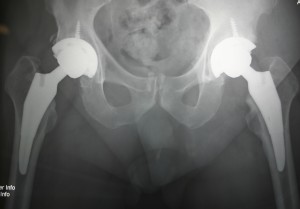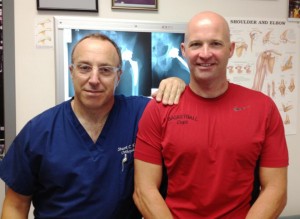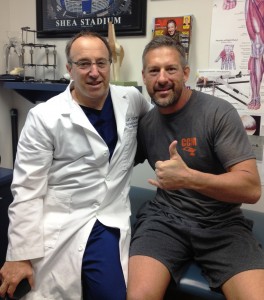I am often asked, “Why should I consider an anterior hip replacement rather than a hip done with another approach?”. I have now completed over a thousand anterior hips, as well as many thousands of posterior hips before that, and I have some ideas about why anterior is often a good choice.

The anterior approach allows us to “sneak in” between muscles, and more naturally attach the implants. The posterior and lateral approaches require you to detach muscles or split them. This leads to suture lines that are painful, and at risk for coming apart. Therefore you have to be more careful not to damage the new hip after surgery. After the anterior total hip, patients are very active, and they don’t worry as much about activity restrictions. The muscles are still intact, and the tension on them helps to keep the hip in place. Patients can do so many more things earlier after an anterior total hip. I have learned from my international visitors that air travel and rehabilitation far from Scottsdale is much safer and easier. I now routinely have patients stay about a week in Scottsdale (or longer if they want to enjoy our weather), and they can return home to their jobs and responsibilities very soon after.

Most of the anterior hip patients take little or no pain medication. Formal physical therapy is not required. I tell patients to walk a lot, using shopping carts for support early on. I like patients to use the shopping carts in their favorite stores to help them balance as they walk around in the first week or two. Putting heavy water bottles or groceries in the cart increases the energy expenditure and exercise. In general, the posterior hip patients have more pain and swelling. Complications can occur in any surgery, but I see more complications in the posterior hips, including leg swelling and more dislocations. Leg length equality is harder to control in the posterior hips. There may be a slight increase in fracture related problems in anterior hips. This may be from the tighter working space. Thankfully, this complication is still rare. The period off work is longer after posterior hips. The period using a walker is longer with posterior hips. In my experience the anterior hip patients get back to tennis and golf much faster.

In my hands, the bleeding has been generally less after anterior hip replacement. We save blood with a special cell saver drain that gives you your own blood back. So there is no need to bank a unit of blood pre-op. The wound is smaller and heals faster in the anterior hips. It is also hidden better in the groin. Our deep venous thrombosis and pulmonary embolism rate is much decreased in the anterior hip group. Less twisting of the blood vessels occurs during the surgery. We are able to use simple aspirin as a blood thinner in the post op period. I have seen more normal flexibility occurring after the anterior hips, and have many patients who return to full yoga classes.

Now that I can directly compare my anterior and posterior hips, the anterior hips win out in most cases. Some congenital and post-trauma deformities are better treated with the posterior approach, precisely because they require the removal of muscles and an increased exposure to put the hip in. VERY large men may need a posterior approach for the same reasons. Obese patients are often done from posterior because of skin problems in the groin area. Hip replacement surgery is getting better, and while no guaranty can ever be made concerning any surgery, the anterior total hip procedure does seem better to me for many patients. It is how I would want my hip done.

If you have hip pain, or you have trouble putting your shoes on from stiffness, or you notice a small limp in your gait – you should call our office 480 994 1149 and have an Xray of your hips done. It is quite simple to diagnose hip arthritis on an Xray – we will see joint space narrowing from the wearing out of the cartilage surface of the joint. Most of the anterior hip replacement patients recover fast, and the procedure does not have to disrupt your normal routine life activities. Many patients go back to light work within a few days. Most are driving themselves in their cars in two to three days.
